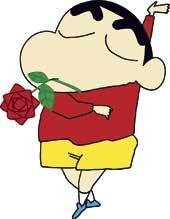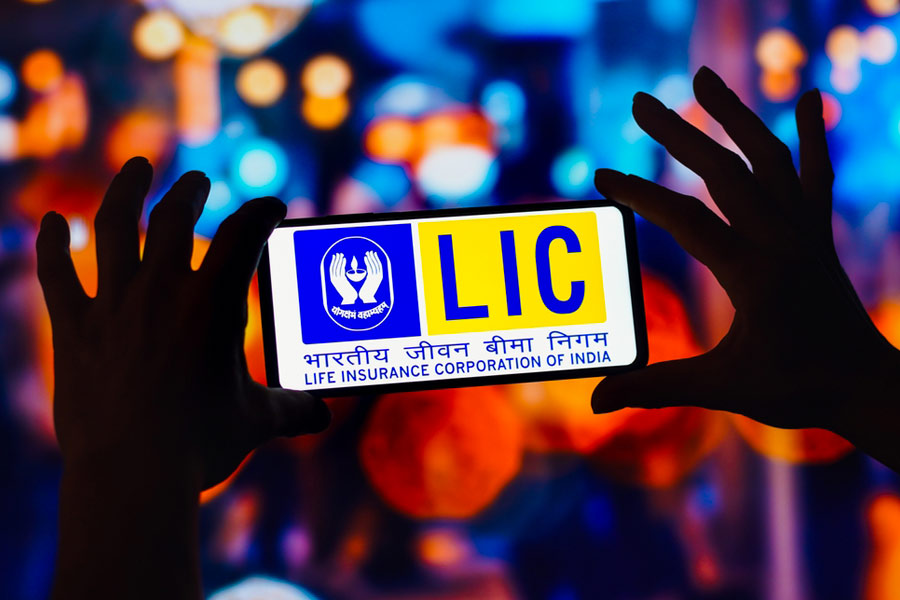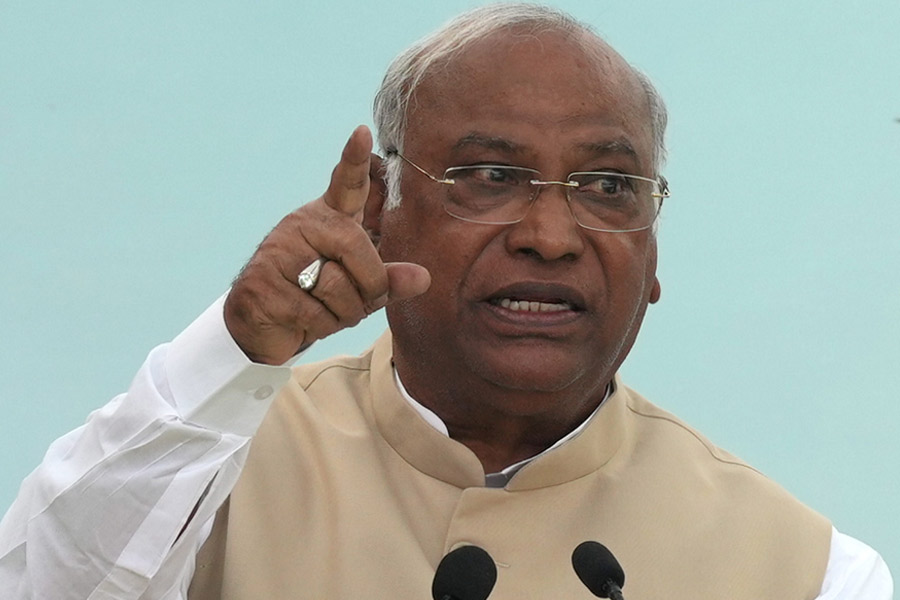 |
| (above) Shin Chan; (below) a still from Harry Potter and the Prisoner of Azkaban |
 |
Avik Banerjee, a student of Class IX in a Bengali-medium school, loves to discuss Harry Potter with his cousin from an English-medium school. There is a clash of vocabulary as Avik’s cousin uses the original English terms, but Avik doesn’t mind. Hindi has helped him to an alternative Potter world, where Harry belongs to “Garurdwar” house (Gryffindor in the original; the other houses, Slytherin, Hufflepuff and Ravenclaw, are Nagshakti, Mehnatkash and Chilghat ) at the Hogwarts School of Witchcraft and Wizardry; he wields a jadooi chhadi (magic wand), rides a jhadu and is a khoji (seeker) in the Quidditch team.
It doesn’t concern Avik either that a new film, Harry Potter and The Half Blood Prince, has just been released. Only the English prints of the film are out in the Bengal theatres — and Avik is not interested. He will wait till the film is dubbed in Hindi. In any case the boy wizard from England comes on Indian television screens across the nation once every two months, speaking in Hindi.
Avik is among the generation growing up in and around the city, and elsewhere in the state, whose world of imagination is composed almost entirely of TV, and Hindi.
He has grown up with cartoons dubbed in Hindi. Not proficient in English, he admits that he would not have understood the Potter films had they been beamed on the children’s channels in English. In fact, Avik has taught himself Hindi by watching TV. “The Bengali programmes were not of much interest. I learnt Hindi by watching cartoons though I cannot read or write the language,” says Avik. “Perhaps I would have figured out the English versions of Harry Potter too if I saw them telecast repeatedly. My English would have improved,” he sighs.
Says film director Raja Sen, who made the award-winning children’s film Damu: “With the hyper-successful and seemingly unending Boogie Woogie (a Hindi talent show for children), everything today is Bollywood.”
Or dubbed in Hindi.
Wearing suit, speaking Hindi
Hindi has stamped out English as far as children’s TV is concerned. Programmes that were originally in English on children’s channels — Cartoon Network, Pogo, Hungama, Disney — are mostly dubbed in Hindi. Industry insiders say for channels like Disney, where both Hindi and English feeds are available, it is up to the cable operator to choose. “But they go by demand, which in India explains the choice of Hindi over English. English may be our language of business, but a local language is preferred for entertainment. Localisation is one of our most important pillars of programming,” says a Disney official.
Disney is no exception. Everyone from Mr Bean, the endearing and permanent disaster under a British gentleman’s suit (on Pogo), to Hannah Montana, who is an average teenage schoolgirl by day and a famous pop singer by night (on Disney), to the Japanese Shin Chan and Kiteretsu (on Hungama) to Ben 10, the young American hero (on Cartoon Network), whose merchandise is a rage, everyone speaks Hindi.
The made-in-India chart-toppers are Agadam Bagdam Tigdam, Vicky Aur Vetaal and M.A.D., in Hindi. Only Vidyasagar on DD Bangla is popular in places not covered by cable TV.
The juxtaposition of foreign images and a common Indian language makes some unhappy. Says Debopriya Sarkar, a Salt Lake resident with two children aged four and five: “It is horrifying how they start intoning in a nasal voice like the cartoon characters and make faces like Mr Bean,” she says. She also wants her children to pick up more English. “It’s Hindi and more Hindi on the children’s channels. That’s why their English vocabulary is not developing.” A DTH user, she opts for the English feed whenever she switches on the TV for her children. But even in the English feed some of the programmes are in Hindi, especially the Chinese and Japanese cartoons or game shows. “That is why I prefer to buy DVDs of cartoons in English,” she adds.
 |
| Mr Bean |
Bit role
Perhaps the most spectacular is Hindi’s effacing of the vernacular.
According to figures from TAM Peoplemeter System, which rates television programmes, Bengali programming make up only 31.4 per cent of the market share (for viewers of Calcutta in the age group 4-14 years for the eight weeks between May 17 and June 11; see chart below). Kids channels (24.5 per cent), Hindi general entertainment channels (19.9 per cent) and Hindi movies (7.9 per cent), which are mostly Hindi, together make up 52.3 per cent.
Among the top 10 Bengali programmes, only three are cartoons, made exclusively for children: Chander Budi Magicman, Raju Uncle and Vikram Betal. The rest include Mirakkel Akkel Challenger, a comedy show that is peppered with adult jokes, and Sa Re Ga Ma Pa L’il Champs, a musical talent show where little Calcuttans, often dolled up like film actors, sing popular Hindi film numbers, frequently with adult content.
An episode of Mirakkel has an anchor joking: “A grandpa and grandma were out celebrating their 50th anniversary when they fell into the sea. The grandpa managed to swim up but grandma remained underwater. After a while a man who had dived down to rescue grandma came and said that there is a big pearl near grandma. Grandpa said ‘Ok, bring up the pearl and let grandma remain under water a little longer’”(canned laughter). Mirakkel is the fourth most popular programme among Calcutta kids.
Why isn’t there quality programming for children in Bengali?
“Programmes exclusively for children can attract only sponsors like chocolate and chewing gum companies and some stationery products,” says Anuttama Das of Zee Bangla. Says Anupam Pramanik of Akaash Bangla: “All channels go by the TRP and think that serials done exclusively for children won’t be popular enough. But that is so wrong.” But these would hold for all children’s channels.
One reason behind the absence of good children’s programmes in Bengali is viewer demand. Or the lack of it. Not only children. Parents encourage their children to watch programmes like talent shows, especially since Calcutta and Bengal are considered to be the cradle of such talent. Ishan’s parents are disappointed because he prefers Cartoon Network (Hindi) to Mirakkel as they are sure he is “just as talented as those kids performing there”. Game shows and reality shows are touted as good career springboards.
TV channels flaunt them.
“Such shows increase self-confidence and quick thinking. Music and dance contests like Sa Re Ga Ma Pa L’il Champs and Dance Bangla Dance have not only helped groom performers but have also got them the recognition they deserve. Aritro and Bittu have blossomed into full-fledged anchors and actors,” says a Zee Bangla spokesman.
When channels are not grooming little performers who can win, win and win — are there Michael Jacksons in the making out there? — they are presenting children in cameo roles in adult programmes. Ay Brishti Jhenpe on Akaash Bangla or Bou Kotha Kow on Star Jalsa, with child actors, and child viewers, are little more than adult family dramas. Says Soumik Chatterjee, the director of Durga, a serial: “Its TRP usually hovers around 3.7-4. This is due to the children who watch. We have had children who know all the songs and dialogues. Here we have Durga, a simple village girl who suddenly discovers she has supernatural powers to fight evil. We have built Durga into an icon complete with a trishul.”
That’s as much concession Bengali TV programmes will make to children.
No money
Bengali is also not considered commercially viable. One of the channels from the Disney stable, Toon Disney, has feeds in Tamil and Telugu, but not in Bengali. “English and Hindi both work well in Calcutta. Unless there is a market need, we do not feel a need to respond,” says an official. There is no great demand for Bengali in Bengal.
But the most important reason behind lack of quality programming is lack of resources.
“Bengali literature has a wealth of stories which lend themselves to animation. Because of lack of programmes in Bengali, young viewers are losing touch with their roots,” says Indranil Sen, whose company Raimak is producing Raju Uncle and Vikram Betal.
Film-maker Sandip Ray feels the same way. “There is such a wealth of Bengali stories for children, not only by my father (Satyajit) but others as well, which could be used.”
Budget is the big hurdle with regional programmes when it comes to matching the quality with the fare on Cartoon Network. “One needs Rs 2 lakh to 2.5 lakh per episode to produce 24 minutes of animation. We have to make do with half of that. This means instead of 24 frames per second, we have to make do with seven or eight. Of course, quality will suffer,” Sen points out. The software used, Flash, is too basic. If children are still watching, Sen says it is because they are more interested in the story.
 Why doesn’t Doordarshan do something? Doordarshan’s last invitation for children’s serials and animation has drawn a blank, with no one coming forward. “We are told such serials are not financially viable. But we want people to come forward with new ideas, so we will be advertising again,” says Malini Mukherjee of DD.
Why doesn’t Doordarshan do something? Doordarshan’s last invitation for children’s serials and animation has drawn a blank, with no one coming forward. “We are told such serials are not financially viable. But we want people to come forward with new ideas, so we will be advertising again,” says Malini Mukherjee of DD.
What current Bengali programming can do to point out some connection with popular Bengali characters are cartoons Nonte Fonte and Pandob Goenda (on Akaash Bangla). But again, the technology is anti-diluvian.
Meanwhile, on Jetix, in a dubbed episode of Spiderman, Pakshi Manav (Bird Man) says: “Mazaak mat karo pyare bachche.” And Spiderman is heard commenting: “Lagta hai tumhari badhazmi dur karni hai!”










